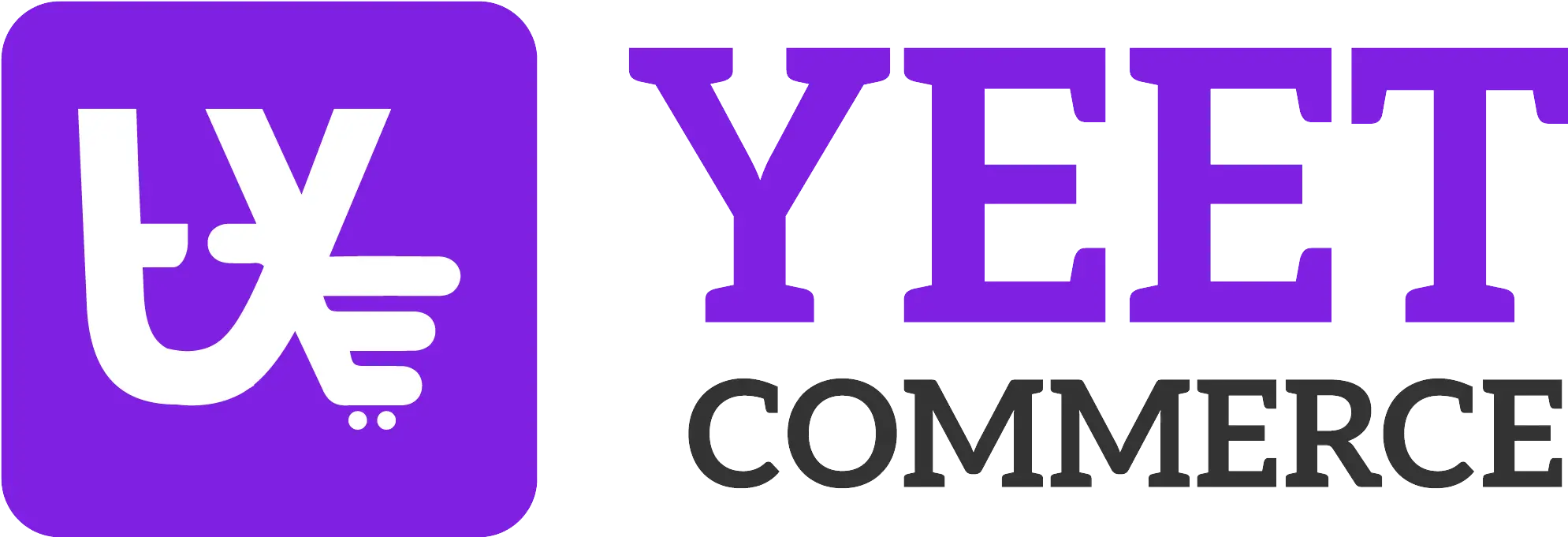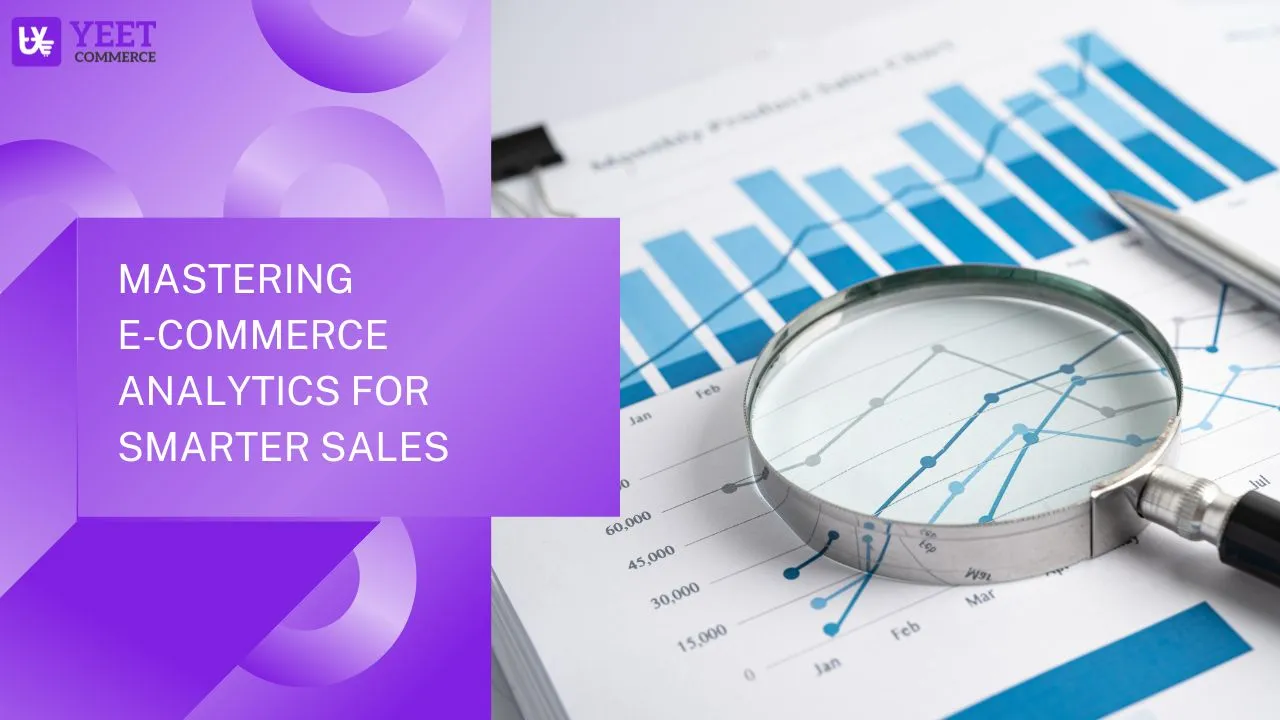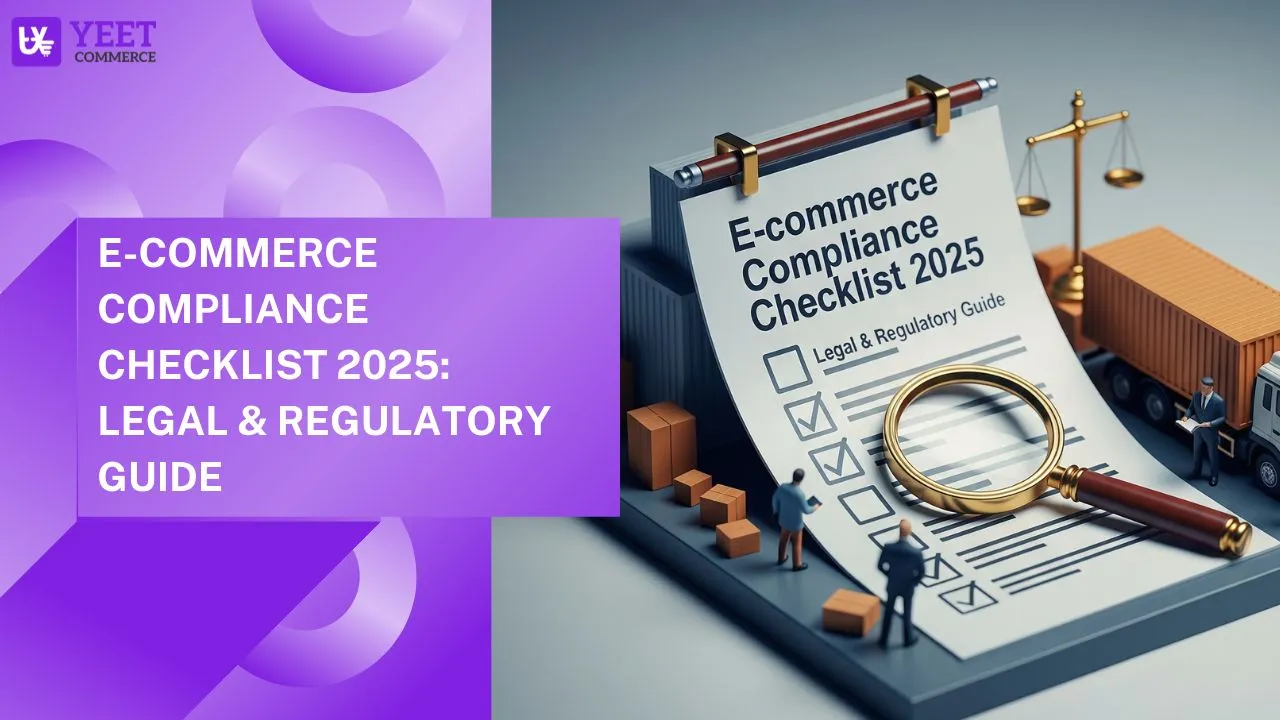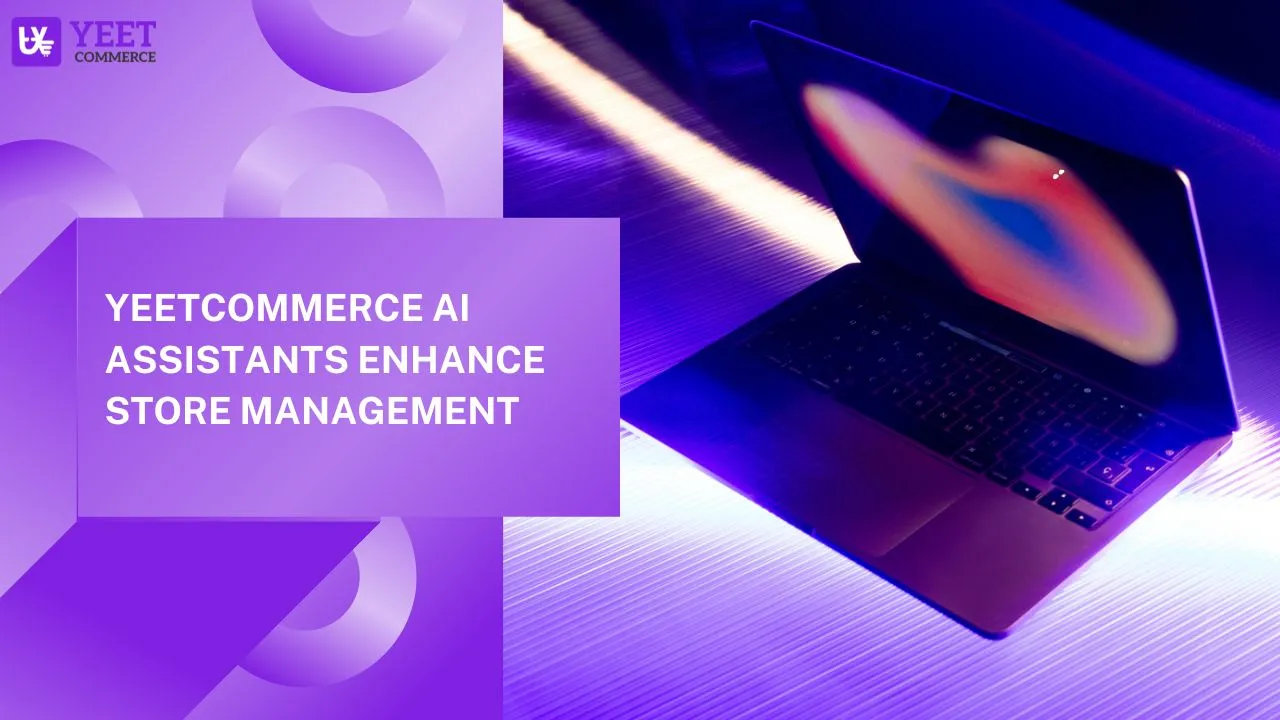Selling products on Instagram has become a game-changer for eCommerce businesses looking to expand their reach and increase sales. With over 2 billion active users, Instagram offers a visually engaging platform to showcase products and connect with potential customers. In this yeetcommerce blog, we’ll explore how to sell products on Instagram and provide you with essential tips to boost your eCommerce success. Whether you’re a seasoned seller or just getting started, these strategies will help you create a strong presence and drive sales on one of the world’s most popular social media platforms.
Why Instagram is a Goldmine for eCommerce
Instagram has become a goldmine for eCommerce businesses, offering a visually appealing and engaging platform that can drive significant sales. With over 2 billion monthly active users, Instagram provides an ideal opportunity for businesses to connect with a vast and diverse audience. Its user demographics span a wide range of ages, making it accessible to nearly every target audience. With such a large pool of users, Instagram allows eCommerce businesses to reach millions of eyes daily.
The platform’s visual-first nature plays a huge role in its success for eCommerce. Instagram is built around images and videos, which are key to capturing your audience’s attention. High-quality visuals of your products, styled in appealing ways, create a desire for your offerings. Additionally, Instagram’s shopping feature allows users to purchase products directly from posts or stories, streamlining the purchasing process.
One of Instagram’s most powerful tools for eCommerce is its shoppable posts and stories. These features allow businesses to tag products directly in their images, making it easy for users to browse and purchase with just a few clicks. By simplifying the shopping process, Instagram has turned casual browsing into potential sales.
Instagram’s ad platform is another reason why it’s a goldmine for eCommerce. It allows businesses to target specific demographics based on location, interests, and behavior. These targeted ads increase the likelihood that your products are seen by people who are more likely to make a purchase, making Instagram ads a cost-effective tool for driving sales.
Influencer marketing thrives on Instagram, where influencers showcase products in a way that resonates with their followers. Partnering with influencers in your niche can provide social proof and introduce your brand to a broader, highly engaged audience. This type of marketing is incredibly effective at driving conversions for eCommerce businesses.
Instagram’s integration with Facebook’s eCommerce features makes it easy to manage product catalogs, run promotions, and track sales. With Instagram’s shopping features, businesses can create a seamless shopping experience without users needing to leave the app. This reduces friction and can lead to higher conversion rates.
The platform’s focus on storytelling allows eCommerce brands to humanize their products. Specifically, through Stories, captions, and behind-the-scenes content, businesses can share their brand’s story, values, and mission. As a result, this helps create a deeper connection with customers, which is key for fostering long-term loyalty and repeat sales.
Moreover, Instagram also provides real-time feedback through comments, direct messages, and engagement metrics. This means businesses can gauge customer sentiment, tweak their marketing strategies, and adjust product offerings based on customer preferences. Therefore, this feedback loop is invaluable for optimizing eCommerce efforts.
Setting Up an Instagram Shop in Minutes
Selling products on Instagram starts with setting up an Instagram Shop—a seamless way to showcase and sell your products. It’s simpler than you think, and you’ll be ready to connect with buyers in no time. If you’ve ever wondered how to sell products on Instagram, setting up your shop is the perfect first step. Let’s break it down into easy, actionable steps.
1. Prep Your Instagram Business Account
Before diving in, ensure you have an Instagram Business or Creator account. If you’re still using a personal account, switch it up—it’s free and gives you access to essential business tools like Insights and Shopping features. Navigate to your settings, tap “Account,” and select “Switch to Professional Account.” Choose a category that fits your business and you’re good to go.
2. Link Your Account to a Facebook Page
Instagram Shops are powered by Facebook, so you’ll need a linked Facebook Page. This doesn’t mean you have to post on Facebook, but the connection is crucial for syncing product catalogs and managing your shop. If you don’t have a Facebook Page, create one—it only takes a few minutes.
To link the accounts, head to your Instagram settings, tap “Business,” and follow the prompts under “Set up Instagram Shopping.”
3. Set Up Your Product Catalog
Your product catalog is the backbone of your Instagram Shop. This is where all your products, descriptions, and prices live. You can create your catalog using Facebook Commerce Manager or integrate with an existing eCommerce platform like Yeetcommerce or BigCommerce.
Add high-quality photos and clear, concise descriptions. Include prices, sizes, and any other details customers need. Remember, your catalog isn’t just a list—it’s your virtual storefront, so make it appealing!
4. Submit Your Account for Review
Once your catalog is ready, it’s time to submit your account for review. Instagram reviews your shop to ensure it complies with their policies. This process can take a few days, so don’t panic if it doesn’t happen instantly.
To start the review, go to your Instagram settings, tap “Business,” then “Set Up Instagram Shopping.” Follow the steps and hit submit. While you wait, focus on creating engaging posts to build anticipation for your shop launch.
5. Enable Product Tagging
After approval, you can enable product tagging—a game-changer for selling on Instagram. This allows you to tag products directly in your posts and stories, making it easier for customers to shop. Imagine (without actually saying imagine!) someone seeing your post, clicking on the tagged product, and buying it within minutes. That’s the magic of Instagram Shopping!
To enable product tagging, go to your settings, select “Business,” and tap “Shopping.” From there, choose your catalog and start tagging away.
6. Optimize Your Shop for Success
An Instagram Shop isn’t just about setting up—it’s about standing out. Use your bio to highlight your shop and include a direct link to it. Post consistently, using high-quality images and engaging captions that tell a story about your products.
Leverage Instagram Stories and Reels to showcase your products in action. Try hosting live shopping events to engage your audience and boost sales. The more creative and interactive you are, the more likely your shop will thrive.
Creative Campaigns That Made Products Go Viral
Instagram’s magic lies in its ability to turn ordinary products into viral sensations. So what’s the secret? Creative campaigns that resonate with the audience. For example, take the case of Daniel Wellington, the minimalist watch brand that skyrocketed to fame by collaborating with influencers and using the hashtag #DWPickoftheDay. As a result, this simple yet effective strategy drove user-generated content and made their products must-haves.
In addition, “User-generated content increases engagement by 28%,” says social media expert Neil Patel. To achieve similar success, you can replicate this by creating challenges, contests, or even memes that align with your brand’s identity. Campaigns like “Share Your Style” or “Tag Us to Feature” encourage your followers to showcase your products, amplifying your reach organically.
Instagram Ads: A Step-by-Step Guide for Beginners
Instagram ads are a game-changer, offering unparalleled precision when targeting your ideal audience. Whether you’re a beginner or a seasoned eCommerce seller, leveraging Instagram ads can help your products reach the right people at the right time. Let’s break down the process into actionable steps to ensure your campaigns are a success.
Step 1: Set Up Your Ad Account
The first step is to link your Instagram account to Facebook Ads Manager, the hub for creating and managing ads. If you don’t already have a Facebook Business Manager account, create one—it’s essential for accessing advanced ad tools. Once your accounts are linked, you’ll have access to a wealth of targeting and customization features that make Instagram ads so powerful.
Step 2: Define Your Goal
What do you want your ad to achieve? Instagram ads allow you to select from several objectives, including:
- Brand Awareness: If you’re new to the platform, this helps get your product in front of potential customers.
- Website Traffic: Perfect for driving visitors to your online store.
- Conversions: Focused on encouraging purchases, newsletter sign-ups, or other specific actions.
Clear goals are your compass. For example, if your goal is sales, your ad should feature strong call-to-action buttons like “Shop Now” or “Buy Now.”
Step 3: Select Your Audience
This is where Instagram ads shine. With detailed targeting options, you can pinpoint your audience based on factors like:
- Demographics: Age, gender, and location.
- Interests: Hobbies, preferences, and likes.
- Behaviors: Recent purchase activity, device usage, and more.
Let’s say you sell eco-friendly water bottles. You can target users who follow sustainable living accounts or shop for eco-conscious products. Instagram even allows you to create lookalike audiences—people similar to your existing customers.
Step 4: Create Engaging Content
Instagram is a visual-first platform, so your ad’s success hinges on captivating imagery or videos.
- High-Quality Visuals: Use sharp, well-lit images or dynamic videos that showcase your product’s best features.
- On-Brand Aesthetics: Ensure your ads align with your Instagram feed’s style for consistency.
- Compelling Copy: Keep your captions concise but impactful. Phrases like “Limited Time Offer” or “Exclusive Discount” create urgency.
- Call-to-Actions (CTAs): Always include a clear CTA, such as “Swipe Up” for Stories or “Learn More” for feed ads.
“Ads with videos receive 49% more engagement than static posts,” notes HubSpot. Using Reels or Stories for your ads can help capture attention within seconds.
Step 5: Monitor Performance and Optimize
After launching your ad, the work doesn’t stop. Monitoring performance ensures you’re getting the most out of your budget. Key metrics include:
- Impressions: How many times your ad was shown.
- Click-Through Rate (CTR): The percentage of users who clicked your ad.
- Conversions: The number of people who completed your desired action (e.g., a purchase).
Use these insights to tweak your campaign. For example, if your CTR is low, you might experiment with different images or headlines. If conversions are underwhelming, consider retargeting users who interacted with your ad but didn’t purchase.
Pro Tips for Success
- A/B Testing: Test different versions of your ads to see what works best. Change one variable at a time, such as the image, headline, or audience.
- Budget Smartly: Start with a modest budget and increase it as you identify what’s working.
- Stay Consistent: Even if your first campaign doesn’t perform as expected, learn from the data and refine your approach.
Scheduling Posts for Maximum Engagement
Timing is everything on Instagram. In fact, posting when your audience is active boosts visibility and engagement. But how do you figure out the right time?
Fortunately, Instagram Insights is your go-to tool. It shows when your followers are most active, helping you schedule posts strategically. Additionally, according to Hootsuite, “Posts published between 9 AM and 12 PM on weekdays get the highest engagement rates.”
Moreover, tools like Later and Buffer make scheduling a breeze. Plan your content calendar in advance and let automation handle the rest. This way, you ensure consistency, even during busy times, and keep your followers engaged with regular updates.
Real-Life Case Studies of Instagram Sellers
There’s nothing like learning from those who’ve already walked the path. Real-life success stories of Instagram sellers not only inspire but also reveal strategies that actually work. Let’s dive into how three standout brands—Gymshark, Glossier, and The Sill—used Instagram to transform their businesses.
Gymshark: Building a Fitness Empire Through Community
Gymshark, a fitness apparel brand, skyrocketed from a startup to a billion-dollar business, largely thanks to its Instagram strategy. They didn’t just sell workout gear—they created a lifestyle.
One of their game-changing moves was leveraging Instagram influencers. By collaborating with fitness enthusiasts and athletes who had significant followings, Gymshark positioned their products as aspirational yet attainable. Their posts featured real people in action—sweating it out in the gym or sharing progress stories.
But what truly set them apart was their interactive campaigns like the “66 Days Challenge.” They encouraged followers to adopt a new fitness habit and share their journey using the campaign hashtag. The result? Millions of user-generated posts flooded Instagram, creating a sense of belonging among followers.
Key Takeaway: Build a community around your brand. Engage users in challenges or trends that inspire them to share their stories.
Glossier: Turning Customers into Advocates
Glossier, the beauty brand beloved by millennials, mastered the art of relatability. Instead of focusing solely on products, they emphasized real customer experiences and made followers feel part of the brand.
Their Instagram feed is a blend of user-generated content, relatable captions, and aesthetically pleasing visuals. They encourage customers to share makeup looks and skincare routines using Glossier products, often reposting these as testimonials. One of their captions read, “Because no one knows your skin better than you do,” which resonated deeply with their audience.
This approach humanized the brand, creating an emotional connection that extended beyond the products. Their Instagram Stories further reinforced this by featuring behind-the-scenes peeks and playful polls, fostering two-way interaction.
Key Takeaway: Relatable and authentic content can turn customers into passionate advocates for your brand.
The Sill: Making Plants the Ultimate Lifestyle Statement
The Sill, a plant company, redefined indoor gardening on Instagram. Instead of selling plants as mere home décor, they positioned them as tools for self-care and happiness.
Their posts feature beautifully arranged indoor spaces with their plants taking center stage, inspiring followers to create their own green havens. Stories and reels often include tips on plant care, from watering schedules to troubleshooting common issues. By providing value through education, The Sill earned a reputation as a trusted authority in their niche.
One of their viral campaigns was “Plants Make People Happy,” which encouraged followers to share their own plant setups using the hashtag. This not only boosted engagement but also showcased their products in real-life settings.
Key Takeaway: Sell more than products—sell an experience. Educate, inspire, and show how your offerings fit into everyday life.
Common Threads Among Successful Instagram Sellers
While Gymshark, Glossier, and The Sill cater to vastly different audiences, their strategies share key similarities:
- Authenticity: They prioritize genuine connections with their audience.
- Engagement: Each brand actively involves followers through interactive content, hashtags, and user-generated posts.
- Value Creation: They focus on education, inspiration, or community building rather than just promoting products.
Applying These Lessons to Your Brand
If these brands teach one thing, it’s this: Instagram success isn’t just about selling—it’s about connecting. Start by defining the lifestyle or story behind your product. Engage your audience with interactive content and make them feel part of your journey. Remember, people don’t just buy products; they buy the values and emotions tied to them.
Learning how to sell products on Instagram is more than just mastering the platform—it’s about mastering human connection.
Maximizing Your eCommerce Success on Instagram
Selling products on Instagram presents an incredible opportunity for eCommerce businesses to reach a global audience and drive sales. To begin with, by utilizing Instagram’s visual nature, shoppable posts, targeted ads, and influencer collaborations, you can create a seamless shopping experience that connects with potential customers in meaningful ways. Furthermore, from setting up your Instagram Shop to launching creative campaigns, there are countless strategies to amplify your presence and boost engagement.
However, remember that success on Instagram requires consistency, creativity, and understanding your audience. By focusing on these aspects, staying active, using high-quality visuals, and engaging with followers, you can transform casual browsers into loyal customers. In conclusion, don’t hesitate to dive into the world of Instagram selling—start implementing these tips today, and watch your eCommerce business thrive on this dynamic platform!


















